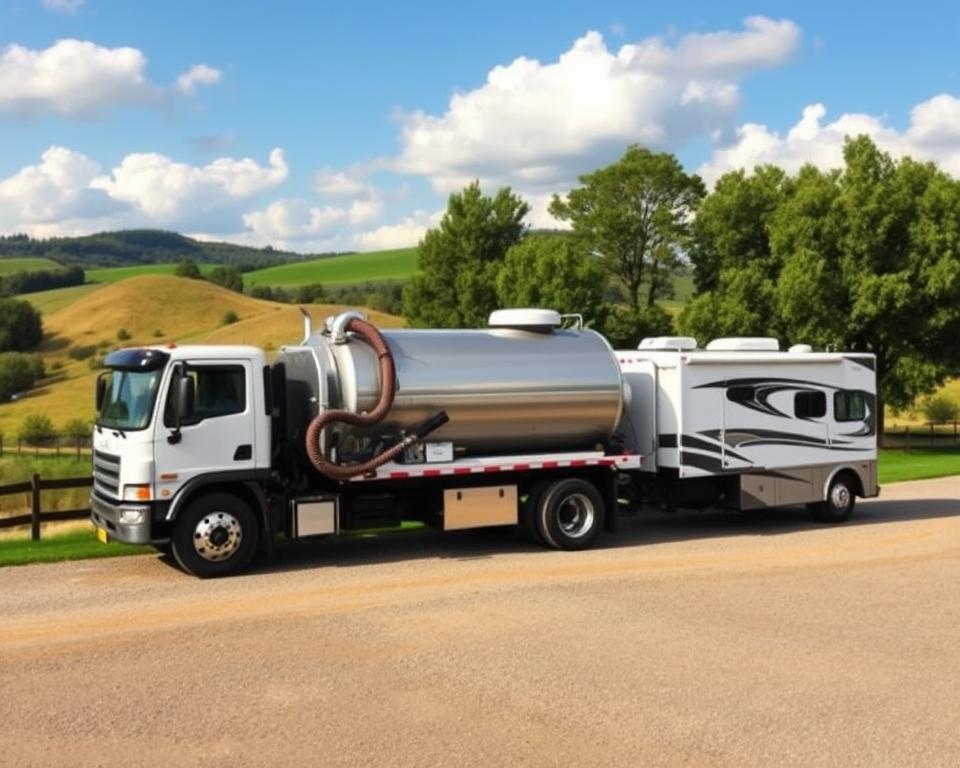The Eco-Conscious Person’s Guide to Grey Water Pumps
Have you ever thought about the amount of water you let go unused daily? It’s vital for those who aim to live sustainably. Grey water comes from our sinks, showers, and laundry. If managed well, it becomes a precious asset. In this guide, we explore how a grey water pump can enhance water efficiency and support sustainable living. By utilizing greywater, you not only lessen your impact on the environment but also see savings on your water bills. Let’s discover how effective RV sewer pump management can benefit you!

The Importance of Understanding Greywater
Greywater comes from everyday activities like dishwashing, showering, and laundry. This type of water is vital for sustainable water management because it’s a renewable resource. This resource significantly increases water efficiency.
It plays a key part in lessening our reliance on decreasing freshwater resources. Greywater recycling helps households lower utility bills and conserve water. This achieves environmental benefits and fosters a green living mentality.
Adopting greywater systems aids in sustainable water use and recycles water effectively. Treating and reusing greywater for purposes like irrigation and toilet flushing allows homeowners to reach their conservation targets. This practice underlines a commitment to eco-conscious water management.
What is a Grey Water Pump?
A grey water pump is a device tailored for managing recycled water. It transfers water from where it’s gathered to locations where it can be used again. This pump’s role is important in water recycling processes. It’s pivotal for sustainable water use, transferring greywater for irrigation, flushing, and more.
Water is moved by the grey water pump using a combination of suction and pressure. The pump is built to be durable, allowing it to manage minor debris and prevent clogs. These pumps make recycling water efficient. They play a key part in saving clean water resources.
Why You Should Use a Grey Water Pump
Utilizing grey water pumps at home offers several benefits for eco-conscious individuals. One major advantage of grey water pumps lies in their capability to enhance water flow. These systems cleverly repurpose water from domestic activities, such as showering and washing, for reuse in activities like irrigation or toilet flushing.
Choosing these systems highlights a serious commitment to sustainable living through a marked decrease in the demand for fresh water. Homeowners observe significant water conservation benefits. They enjoy lower utility bills and a substantial cut in their water usage. The consistent recycling of water also diminishes our environmental impact.
The advantages of grey water system pumps extend beyond just conserving water to also improving the health of gardens. They ensure gardens or landscapes receive a consistent supply of water, thus preventing drought stress. This practice encourages robust plant growth and champions a greener approach to gardening and landscaping.
The Different Types of Grey Water Pumps
Choosing the right grey water pump is crucial. There are several types to consider: submersible, external, centrifugal, and multi-stage pumps. Each type boasts distinctive features and benefits for various applications.
Because they work while submerged, submersible pumps are ideal for getting water from tanks or wells. They tend to be efficient and quieter, as they’re submerged. In contrast, external pumps operate while located outside of the water storage. They’re simpler to install and are favored for scenarios needing easy pump access.
The mechanism by which centrifugal pumps move water is a spinning impeller. This makes them reliable and suitable for a wide range of uses. For situations where water needs to be pushed to higher places, multi-stage pumps are perfect because they use multiple impellers to generate more pressure.
Below is a comparison table highlighting the features of these common types of grey water pumps:
Understanding these pump types is vital for selecting the most suitable one. It ensures improved efficiency and performance in managing greywater systems.
Picking the Appropriate Grey Water Pump
To recycle greywater effectively, it’s crucial to choose the correct grey water pump. When selecting a pump, assessing your greywater system’s size is crucial as different scales require various capacities. It’s essential to know how much water flow you need so you can choose the perfect pump for your requirements.
Energy efficiency is crucial in choosing a grey water pump. Models that are energy-efficient can help you save on your utility costs while still providing strong performance. Look for pumps with top efficiency ratings and low energy consumption to support sustainability.
You also need to think about whether the pump will work well with your filtration system. To prevent blockages and maintain good water quality, the pump you choose should work well with the filters you already have. Keeping these points in mind will guide you to the best pump for your grey water system.
Grey Water Pump Installation Process
The grey water pump installation process starts by finding greywater sources in your home, like sinks and showers. It’s important to pick the right spot for your system. Choosing a location that’s easily accessible will simplify maintenance and make the system more efficient.
After you’ve picked a location, refer to an installation guide for grey water systems. This guide will list the tools and materials needed. You will need to:
If you’re doing a DIY installation, knowing your local rules is crucial. This will ensure your system complies with the law and prevent future issues. Following the recommended practices enhances your system’s performance and lifespan.
How to Maintain Your Grey Water Pump
To ensure your grey water pump stays in excellent condition, regular maintenance is essential. Proper care will help conserve water and extend the lifespan of your pump. Here are essential maintenance tips:
By integrating these practices into your routine, you can avoid blockages and ensure peak pump performance. Focusing on these aspects is crucial for maintaining your grey water pump effectively.
Following these guidelines ensures your grey water pump maintenance is on point. This approach boosts your system’s efficiency and effectiveness.
What to Consider About the Cost of Grey Water Pumps
When you invest in grey water pumps, it’s important to analyze the costs carefully. Prices vary due to brand, features, and specifications. Homeowners might spend $200 to $1,500 on a pump, depending on its attributes.
Don’t forget to include installation fees when calculating the total cost of grey water systems. Expect to pay an extra $300 to $1,000 for professional installation. These expenses are crucial to consider along with the pump’s cost to fully understand the affordability of grey water solutions.
It’s very important to think about how much energy it uses when you’re planning your budget. Many grey water pumps are designed for efficiency, minimizing additional costs on utility bills. Adopting these systems can lead to decreased water usage, offering substantial savings long-term. Despite the initial cost, the financial benefits of grey water systems are compelling over time.
If you want to live sustainably, adopting a grey water pump is a key action. It lets homeowners save water and cut utility bills. This not just benefits your home but aids the environment too. Grey water recycling is a step forward in conservation.
It might seem challenging to select and maintain a grey water system initially. However, the advantages for living sustainably make it worthwhile. These systems boost your property’s value and encourage wise water use.
It’s not just about saving money when you use grey water systems; it’s also crucial for an eco-friendly lifestyle. The choices we make today shape a sustainable tomorrow. By embracing these practices, you contribute to a healthier planet.

